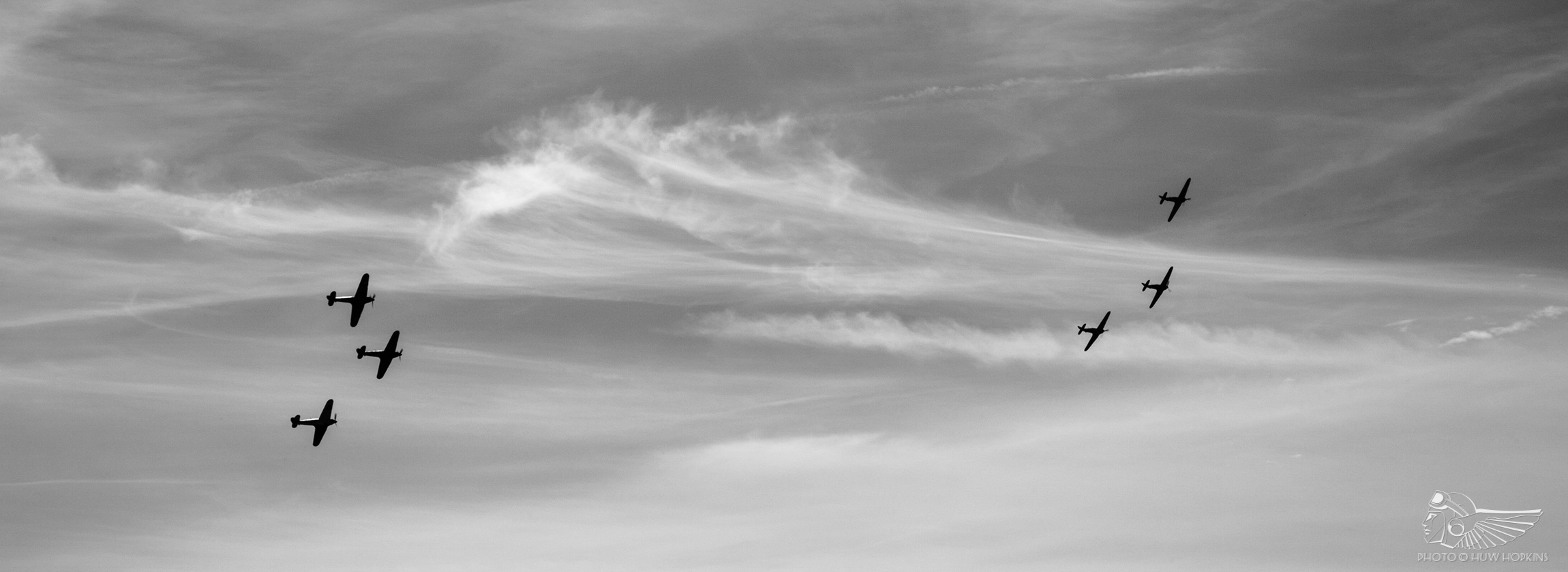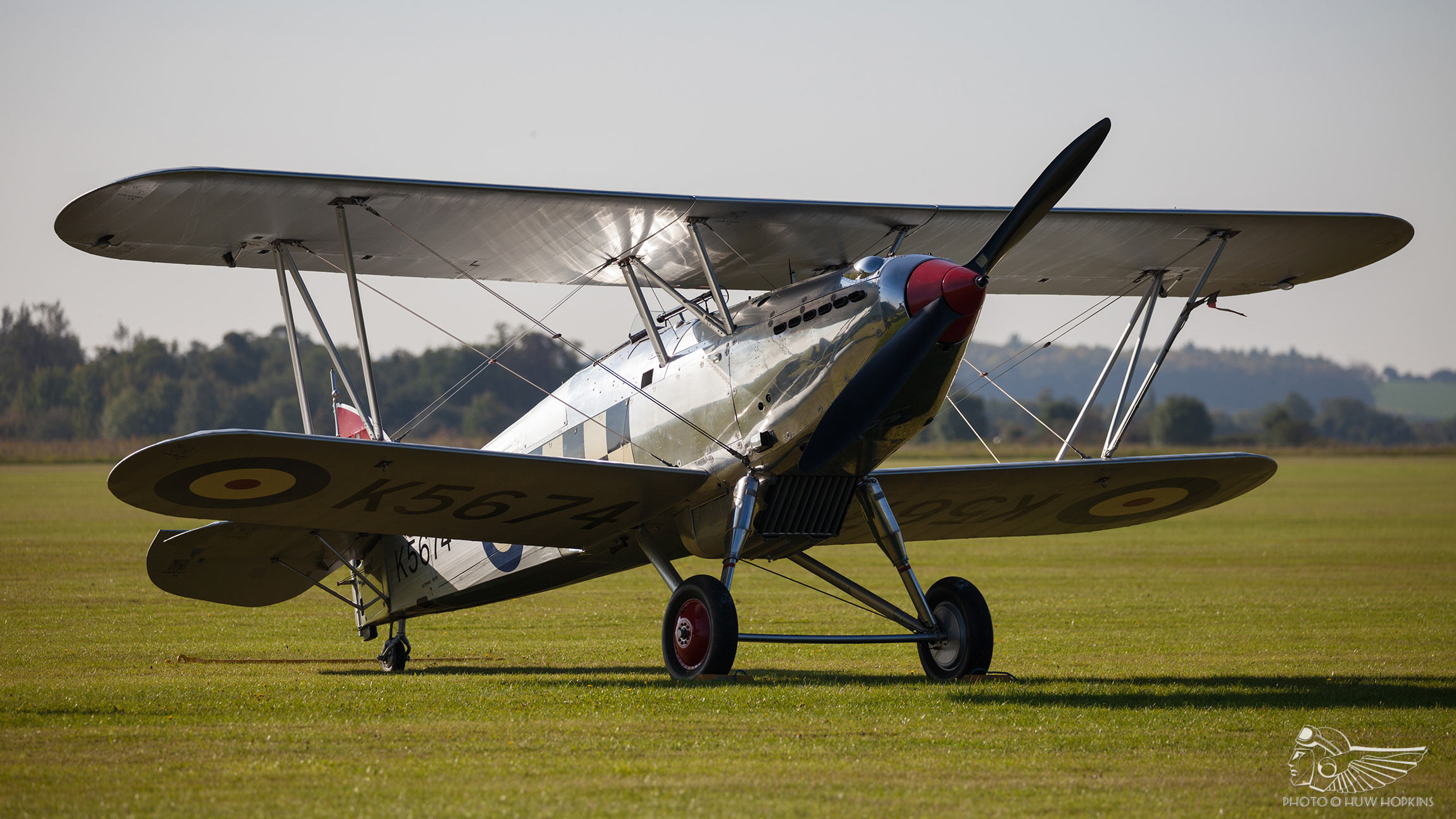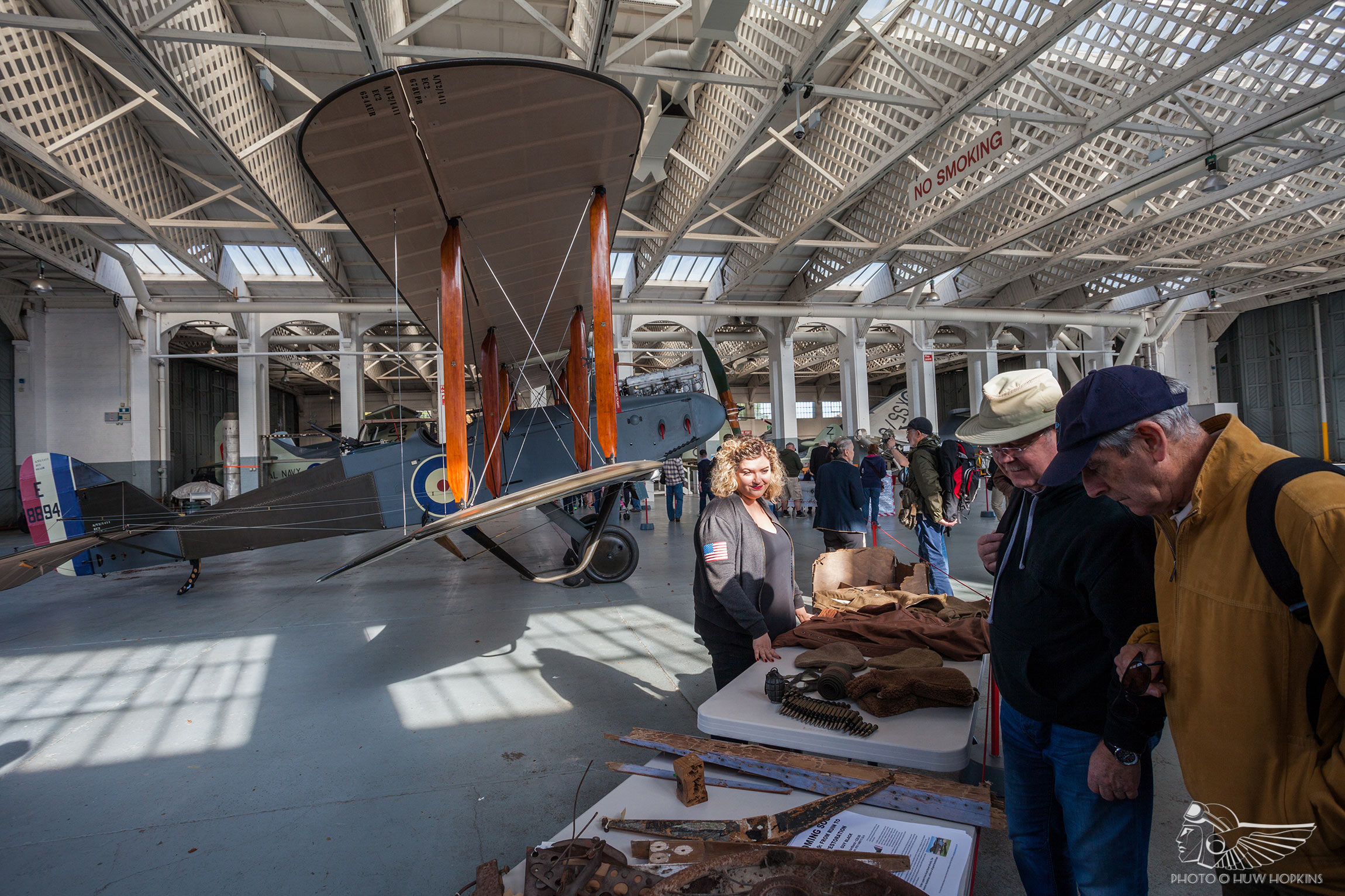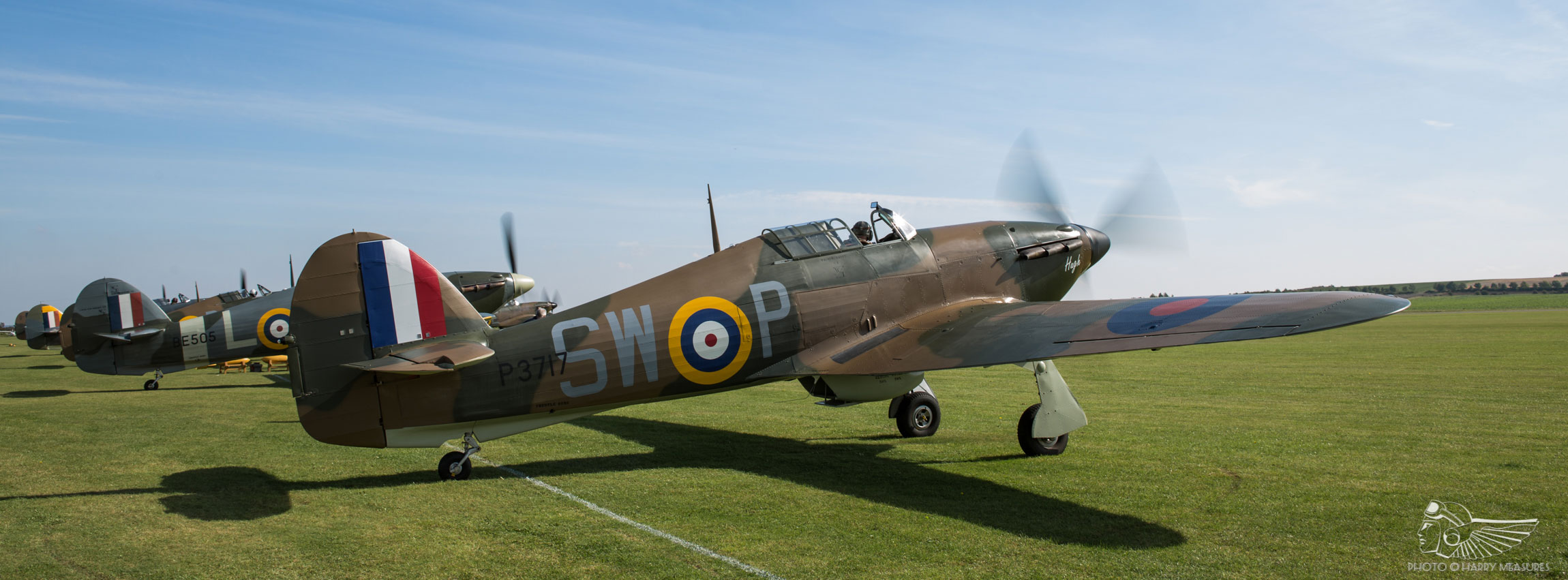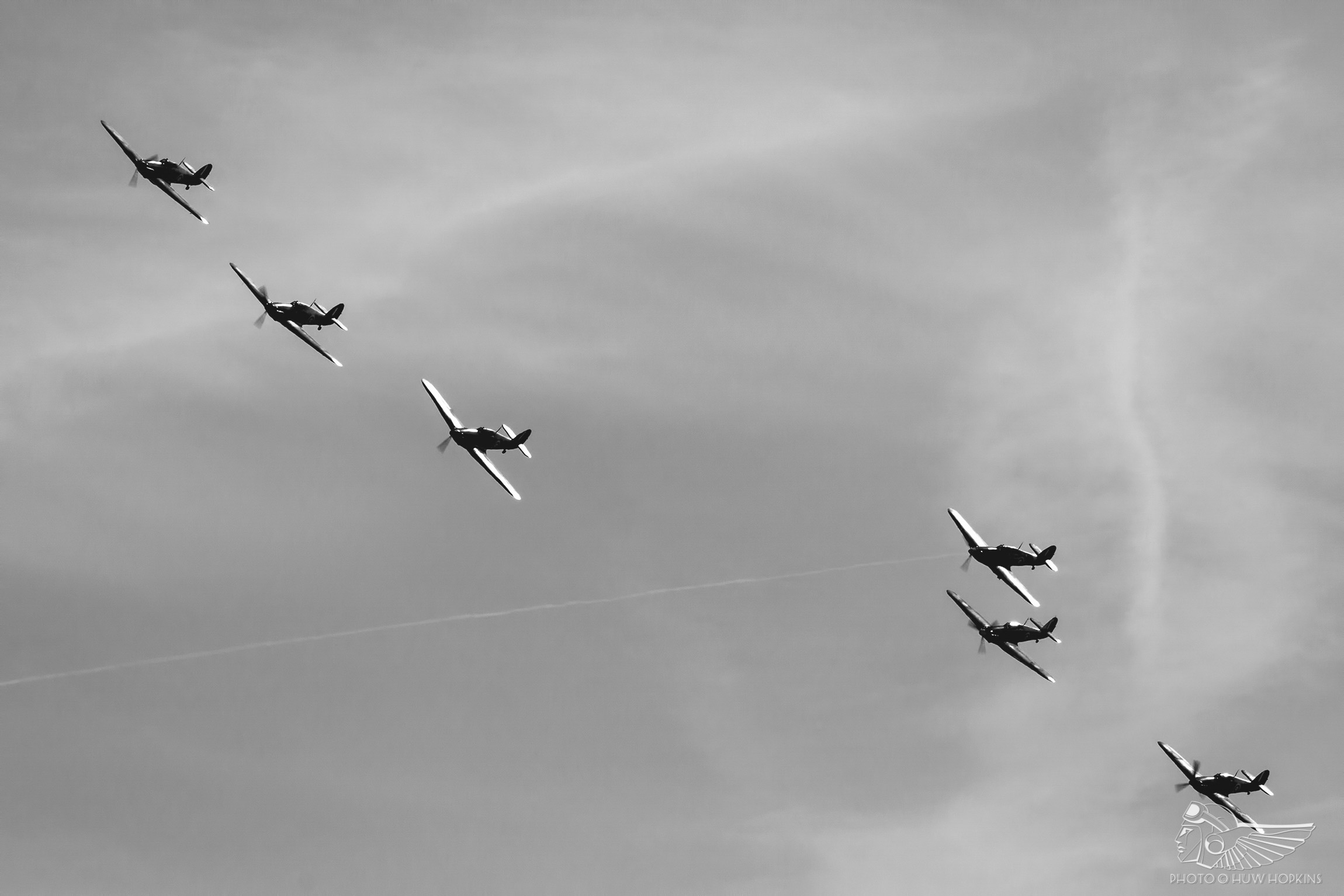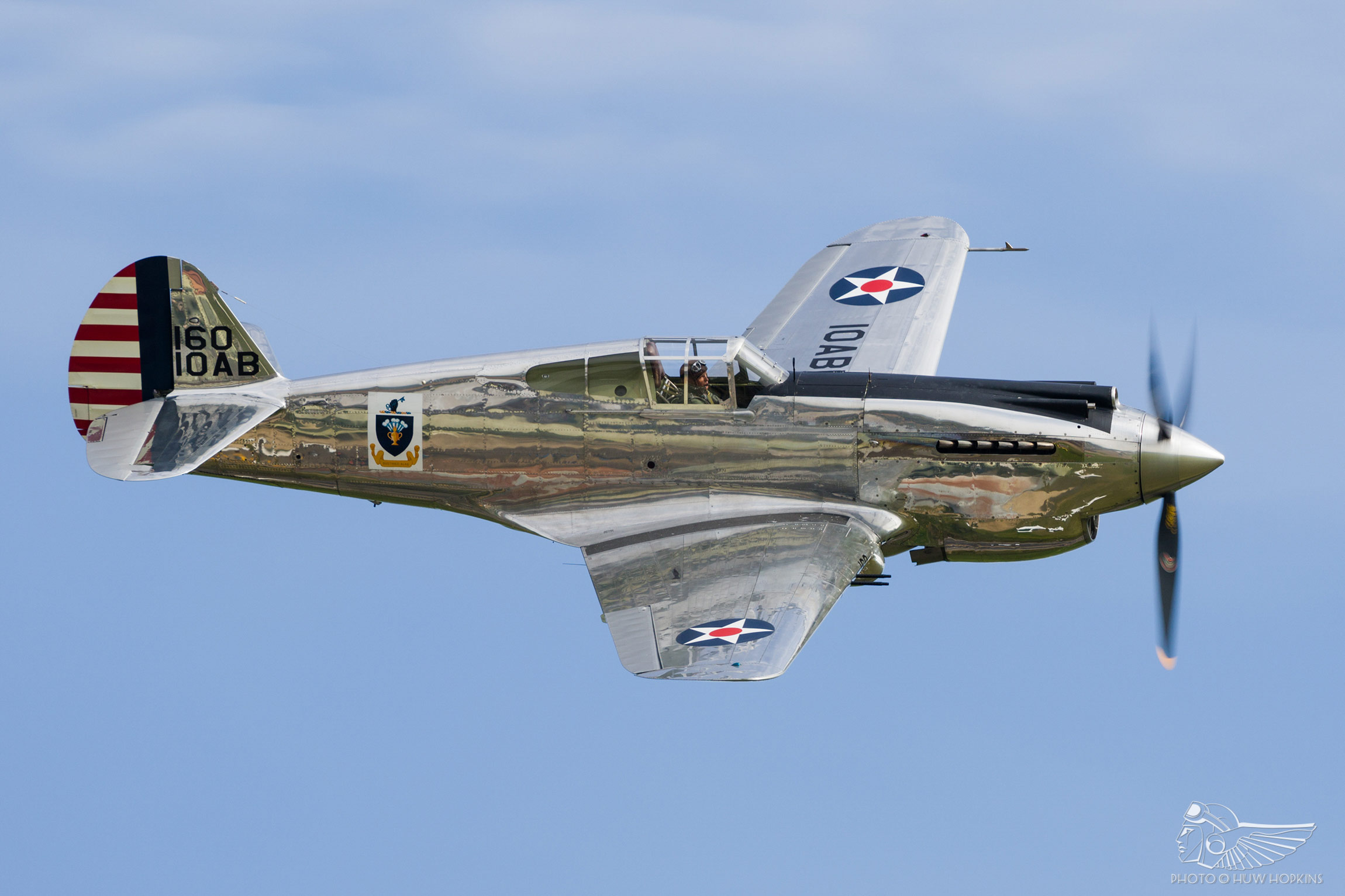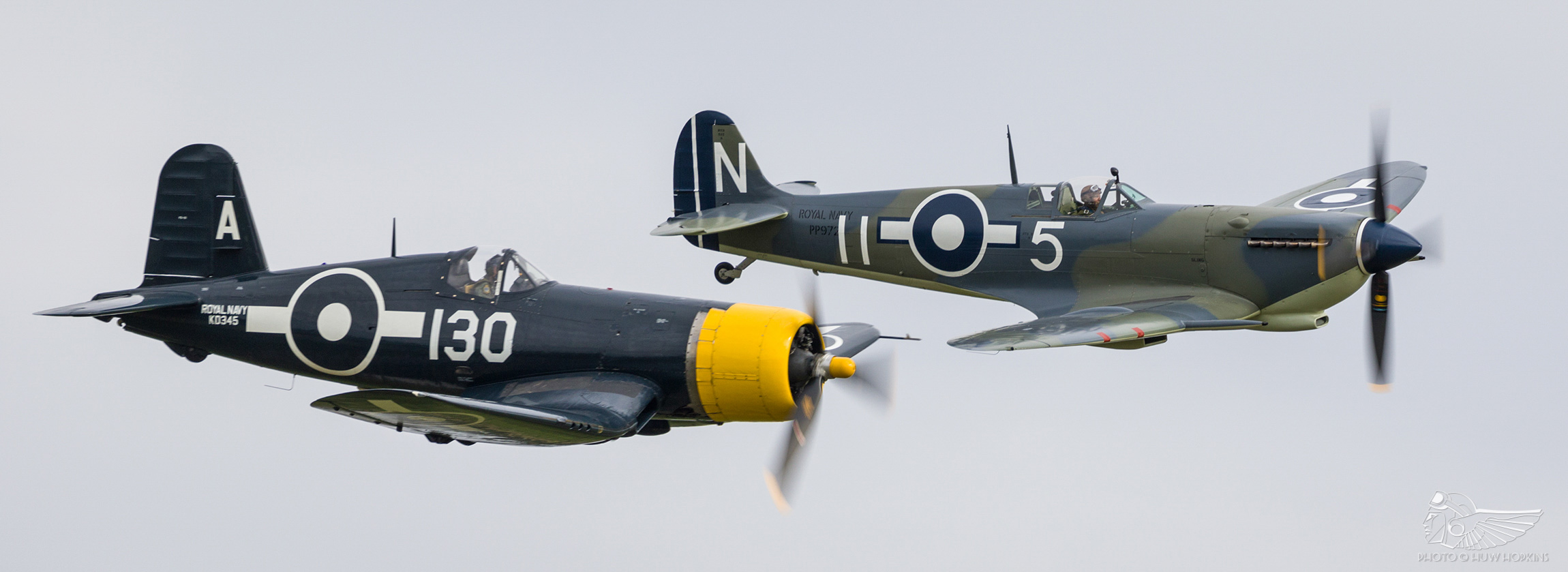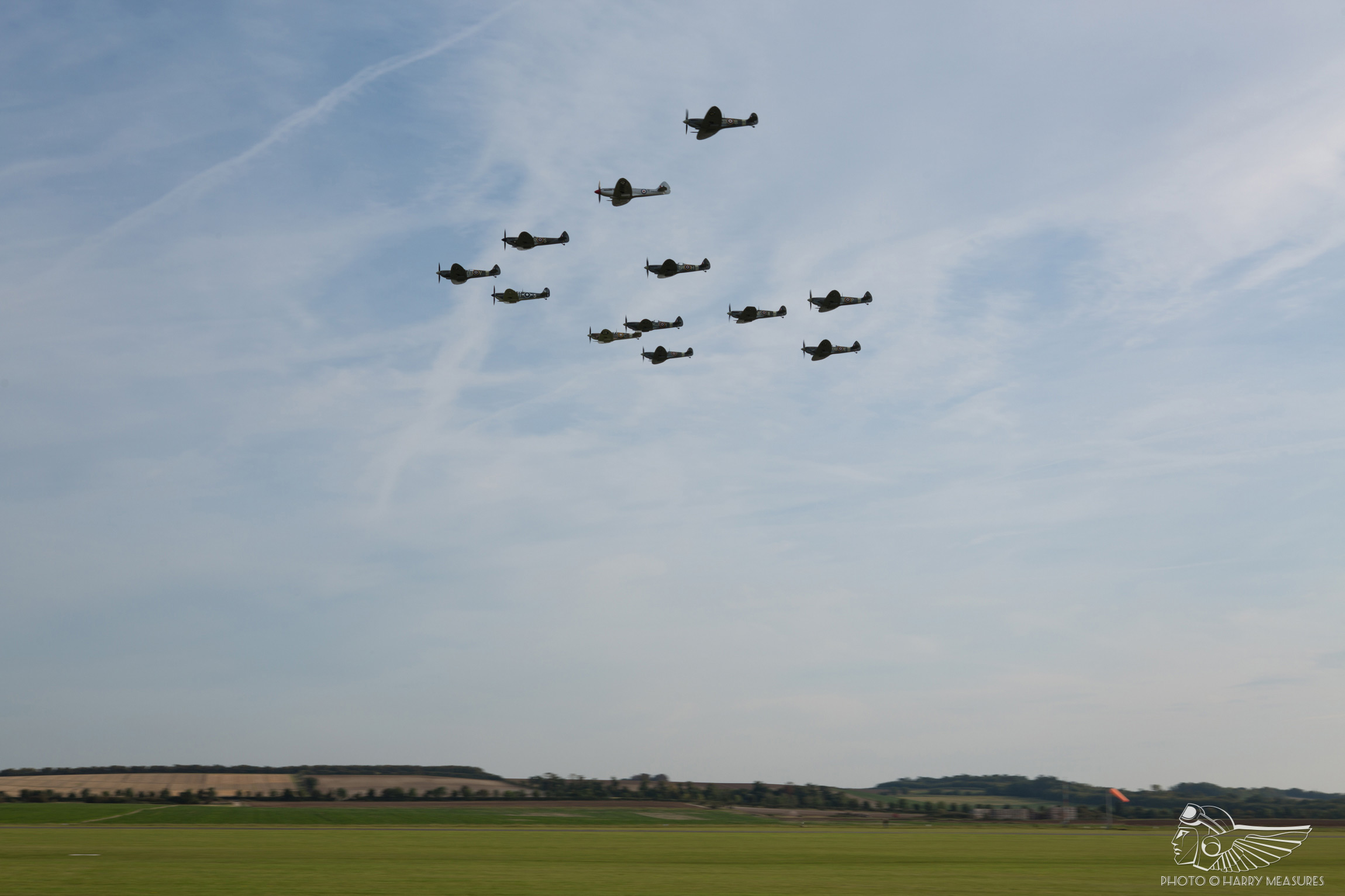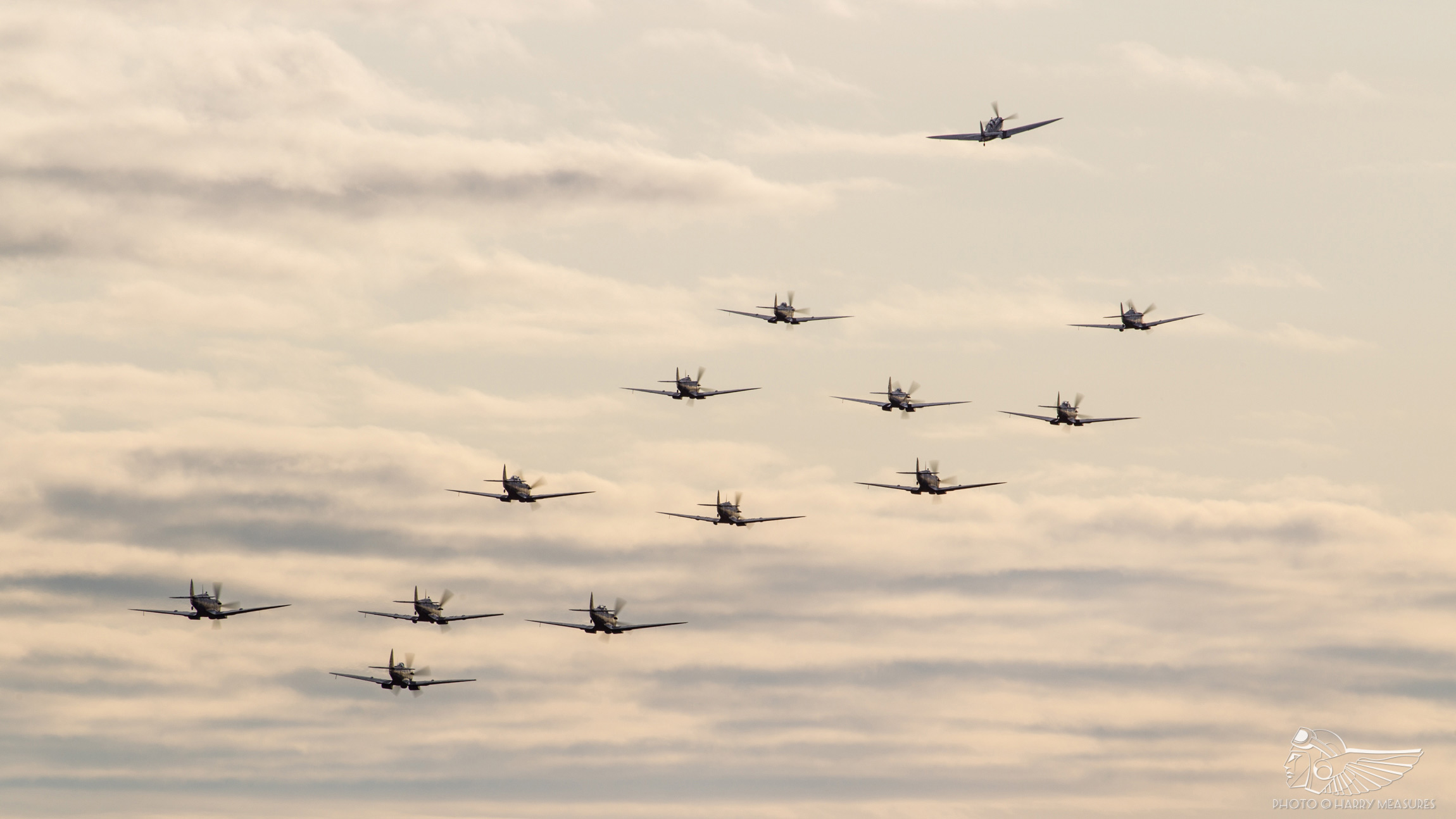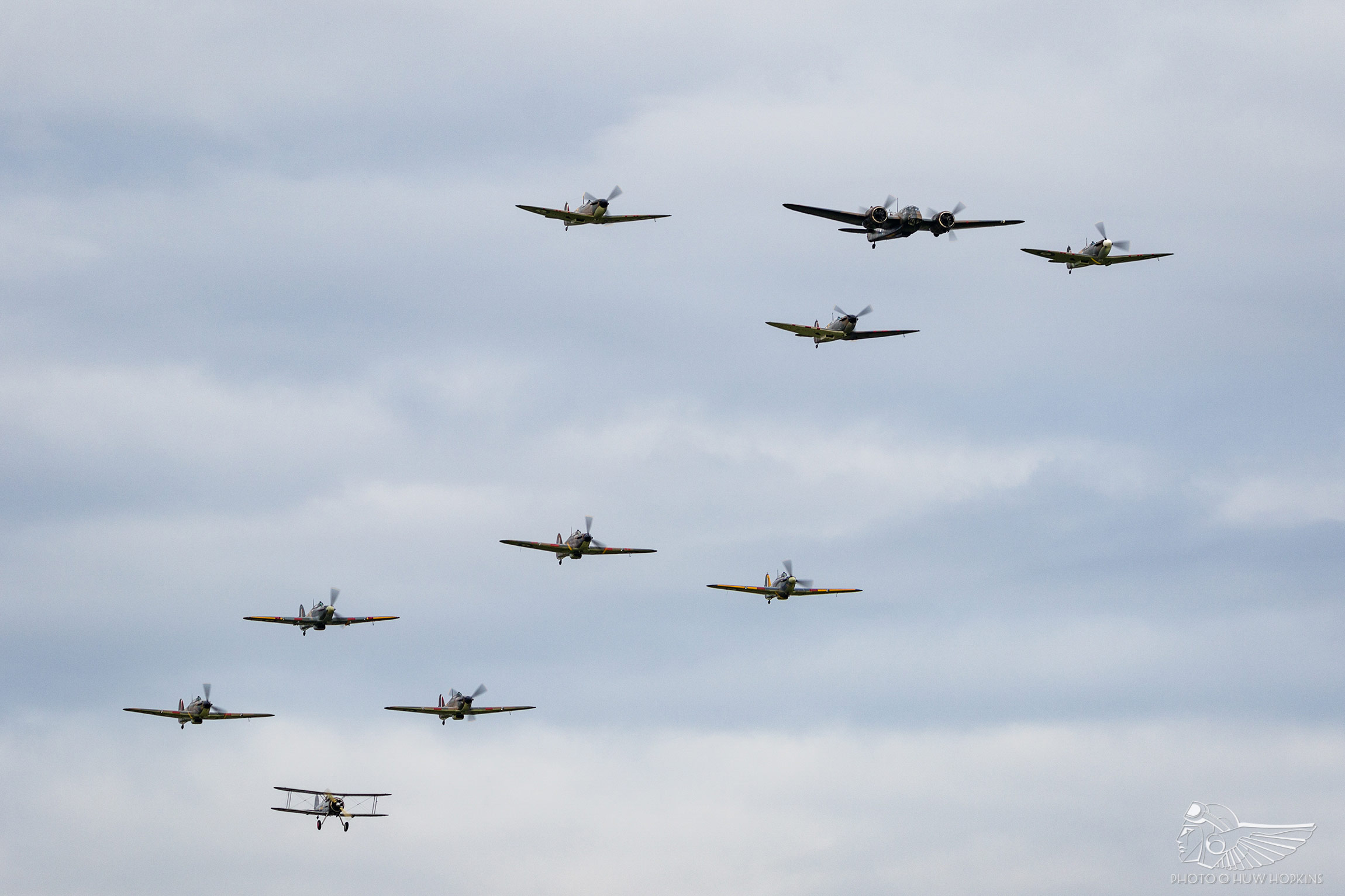The Imperial War Museum’s September Battle of Britain Air Show provided a veritable warbird extravaganza. Boasting an impressive number of vintage aeroplanes even for an IWM show the well-structured flying display utilised the aircraft in unique and historic aerial set-pieces that stirred the emotions, forging not only one of the finest UK airshows of the 2017 season but broader moments that stand prominently in airshow history.
The 2017 IWM airshows are the first in a new era following the retirement of longstanding Flying Display Director (FDD) Jeanne Frazer at the end of the 2016 airshow season. Taking up the mantle are FDD Geoff Brindle and revered former display pilot Rod Dean as Flying Display Coordinator. With their first two airshows complete and the dates and themes for the 2018 events released, we have a clearer picture of what this new era of IWM Duxford airshows will look like – namely that May’s Duxford Air Festival and September’s Battle of Britain Air Show are set to be recurring features, with the former clearly aimed more at the general public and the latter squared more towards the ardent enthusiast with the promise of large volumes of Spitfires also appealing to the general public.
One worry is that repetitious themes may strangulate the variety of displays that we have come to enjoy at Duxford. The May airshows at Duxford have historically featured some stunning warbird tributes to the American airmen who flew from Duxford and elsewhere in East Anglia, as well as wider tributes to the D-Day and VE-Day anniversaries. With such things clearly not fitting into the Battle of Britain theme for the September show, there is hopefully scope for increased warbird participation at the Air Festival, even if this only amounts of a handful of aircraft. In his latest newsletter, Friends of Duxford chairman Andrew Kitney says he is looking forward to seeing how the themes develop in the future, hinting at there being room for growth, which is positive. The Battle of Britain Air Show would prove too that the development of themes is very much on the table, differing to the offerings of recent similarly themed events at Duxford.
Along with settling on a recurrent theme, the later September date for the airshow will be maintained in 2018, after a number of years of changeable scheduling. For enthusiasts this is pleasing to see as it avoids those annoying event clashes that were commonplace earlier in September, as well as diminishing the possibility of other events such as the Goodwood Revival sapping participants from the show. The later date also places the event halfway between the old early September date and the now extinct Autumn Air Show, lending the event a distinctly autumnal feel. Indeed there is just something so special about arriving at Duxford on a slightly chilly morning, with warbirds on the grass silhouetted against the low morning sun and that oh-so luminous autumnal light picking out the colours of trees around the Belfast Truss hangars as they begin to turn. The atmosphere on the morning of such a Duxford airshow is something that is unrivalled.
One key draw for enthusiasts in the mornings before the airshow began was found in Hangar 3, where the Historic Aircraft Collection’s (HAC) recently completed Airco DH-9 restoration was on show. The aircraft is now tantalisingly close to flight and once it does so it will be the only original First World War bomber to fly anywhere in the world. The HAC and Retrotec team were on hand to chat to visitors with a fascinating display of items for the public to look at and to touch (which enhances engagement with the younger, impressionable generations), ranging from parts that were unable to be re-used in the restoration to the equipment worn by First World War aviators. This set-up certainly seemed popular with visitors, with a real bustle in the hangar, and anyone wishing to get a more in-depth insight into this aircraft would do well to attend the upcoming ‘HAC at Home’ day focusing on the DH-9 restoration with a talk from Guy Black on 21 October. Hopefully this rare bomber will join the airshow line-ups at Duxford in the not too distant future.
On the flight line the plethora of warbirds lined-up ready for the show was nothing short of spectacular! Historic aircraft stretched as far as the eye could see, from beyond the American Air Museum at the western end of the airfield all along the grass and back onto the jet pan at the other – even stalwart Duxford visitors remarked upon the breadth and depth of the warbird gathering. Much has been made about Duxford’s value for money, but as some noted in the lead-up to the event, a standard Adult single day ticket (£33.95) plus car parking fee (£5) equates to paying 81 pence per warbird/classic jet, not taking into account the individual aircraft of the Great War Display & Tiger Nine teams. A tongue-in-cheek assessment, certainly, but a point to mull over. Even better value for money can be had by purchasing weekend passes, utilising the public transport or park and ride schemes, or car sharing, to mitigate or share the car parking fee, as well as entering the Friends of Duxford (soon to be IWM) scheme to enjoy a considerable discount. The flying display at IWM shows has also been lengthened by one hour and now runs from 1pm to 5.15pm. Concerns around value for money clearly didn’t put off the large crowd of circa 39,000 people who attended the airshow over the weekend. Healthy figures indeed!
The star attraction of the weekend, certainly for enthusiasts, was a monumental six-ship of Hawker Hurricanes flying together in the opening segment of the flying programme. Such numbers of Hurricanes displaying together is unprecedented in recent airshow history and was certainly the first time that such a number of the type had flown together since the 1951 filming of Angels One Five. As the six scrambled from the grass we were afforded a view of what it may have been like to have been stood at RAF Duxford in the summer of 1939, when such occurrences would have been commonplace as Nos 19, 242 and 310 Squadrons were gathered at the airfield under the leadership of the legendary Douglas Bader – the birth of 12 Group’s “Duxford Wing”. Accustomed we may be to seeing mass departures of warbirds at Duxford, as the Hurricane gaggle climbed out at short intervals with that typical nose-high attitude one was acutely aware that this was something rather special.
The Hurricanes formed two vic-three formations, with Dave Harvey leading Stu Goldspink, Clive Denney, Paul Stone, Peter Teichman and Mark Levy through a beautifully realised sequence which was excellently flown by all. Partway through their display, the two segments moved into line astern for a tail chase, which cast my mind back to Paul Richey’s description of flying practice attacks over Le Havre harbour in the early days of the Battle of France in 1939. This could equally have been a number of the Duxford wing doing the same in the carefree days of the ‘Phoney War’. Unlike a rapturous Spitfire tail chase, this was a more temperate and gentler affair. The silence that fell over the crowd said it all; you could have heard a pin drop over the whispering Merlins, people clearly understanding and taking in the significance of a Hurricane gathering years in the making.
Following immediately on from the Hurricane sextet was the Battle of Britain Memorial Flight trio of Lancaster, Spitfire and another Hurricane, meaning that in just a few minutes those present at Duxford had seen seven flying Hurricanes. The trio put on a fine show which included lots of topside photo opportunities for the photographers, particularly at the eastern end of the showground, dispelling the common myth amongst enthusiasts that the BBMF ‘never topside’.
With a themed show such as this I always find it is important to illustrate some of the history leading up to the battle itself and this was duly done, although perhaps not to its fullest effect. The development of British aviation prior to the Second World War was briefly charted with a variety of displays; covering the development of fighter tactics was the Great War Display Team’s aerial carousel, as well as a cursory look at interwar civilian aviation and the training of RAF pilots with the Tiger 9 Team, who flew in some challenging winds across the weekend. Perhaps this area could be developed more at future editions of the event with other interwar de Havilland or Miles types as well as a Harvard or two relating to the training aspect.
Frontline interwar RAF types were significantly represented however, and HAC’s Hawker Nimrod and Fury followed the Tiger Moths. RAF fighter tactics were honed in the likes of Hawker’s biplane types during the interwar period, with many of the experienced pilots at the start of the Battle of Britain having cut their teeth on them. Charlie Brown’s showing of the Fury in particular was perhaps the best we have seen to date, with graceful loops followed by an endless success of barrel rolls. It is a great shame that winds prohibited the HAC pair from getting airborne on Sunday, meaning that Saturday marked the Fury’s sole public air display of the year (an appearance at East Kirkby’s airshow was also weather affected). It really is a crying shame that more events don’t book this most beautiful of the silver biplanes – it is an aircraft that would be perfect for a Shuttleworth airshow line-up, for example. Here’s hoping that we see more of this unique fighter in future, particularly during the RAF’s centenary year in 2018.
With the Blenheim, Gladiator and Lysander flying together it was wonderful to see the return of an old favourite to the Duxford programme – the Mercury Flight (or Bristol Formation as it was listed in the programme), a staple at the Flying Legends airshows of old. It was the first time it had been repeated since the return to flight of the Blenheim in its short-nosed configuration in 2014. Solo displays by each aircraft followed with particularly graceful and impressive showings from John Romain in the Blenheim and Dodge Bailey in the Lysander – two true masters of the display flying art. With any luck in 2018 we could also see The Fighter Collection’s (TFC) Gladiator join the fold, the aircraft having missed the September airshow due to technical issues.
Duxford plays host to some of the finest display pilots in the world, and we are accustomed to seeing high-quality displays at the venue. Accordingly, we were treated to several powerful warbird displays across the weekend. With the Curtiss Hawk 75 withdrawing from the flying programme on both days, TFC’s P-40C Warhawk was showcased in its first public solo display since arriving in the UK in 2014. TFC’s chief pilot Pete Kynsey impressed in the early war fighter with his aerobatic prowess, opening with a roll at the apex of a loop followed by a Cuban-8, reverse cuban and various other manoeuvres, an extended slot on the Sunday owing to some weather cancellations being very much appreciated.
Not all of the aircraft on show were related to the Battle of Britain, with a sizeable naval contingent on the bill. Flying with another naval type for the first time since its debut was Seafire LF.IIIc PP972, which was fittingly paired with TFC’s Corsair. On the Sunday the pair split to perform solo displays, with Pete Kynsey once again impressing in the Seafire in what was a lyrical routine of vertical and rolling aerobatics. Harking back to the ‘ultimate big pistons’ duo of the 1990s was the popular pairing of Hawker Fury FB.11 and Grumman Bearcat. A storming low and close first pass announced the presence of Richard Grace and Brian Smith flying these two powerhouses and from a loose high-speed fighter sweep they climbed into their first loop, the Bearcat slotting in besides the Fury in the vertical – impressive flying! As the Bearcat was unable to display on Sunday the honours were left to Mr Grace in the Fury to provide a stunning solo display, the style of which we have become accustomed to seeing from the Air Leasing boss in recent years. Of lesser presence but no less interesting in their routine were the Wildcat and Catalina, beginning with a formation take-off on the grass runway before carrying out an interspersed display, with Stu Goldspink dancing the Wildcat around the larger Catalina in wonderful style. This ‘trio of duos’ was slightly different from the norm and really did work; it was a very engaging segment of the airshow.
Another unusual display came with a Russian Front set-piece featuring the Hispano Buchon taking on a pair of Yakovlev Yak-3s. The scenario put to the audience was that this was an airfield on the Russian Front under attack from a German fighter, illustrated effectively as Lee Proudfoot dived in with the Buchon for strafing runs accompanied by pyrotechnics on the ground, rocking the wings back and forth as if adjusting aim. After several passes the nimble Yak-3s entered the fray and soon got on the tail of the German fighter. This was the first time that the UK’s two resident Yak fighters had been brought together for a display, with Will Greenwood flying his Yak G-OLEG in its Duxford debut alongside Richard Grace in Mark Davy’s ‘White 100’, the two aircraft making an attractive pair in their different camouflage markings. Smoke streaming from the Buchon signalled the conclusion of an alternative and engaging set-piece that would not look out of place at Flying Legends.
One of the unexpected highlights of the weekend was the heavies formation of B-17 Flying Fortress Sally B flanked by two C-47s for a series of passes, which proved to be a wonderful spectacle. Its occurrence even had airshow veterans wondering if this was a first-time formation for Sally B; perhaps our readers may know? It is also notable that the crews flying the heavies in the formation included all of the current Sally B captains – Peter Kuypers, Andrew Dixon and Roger Mills.
In the current era of non-aerobatic classic jet displays, the routine put together by the Norwegian Air Force Historical Squadron with their trio of Vampires FB.52 and T.55 and MiG-15UTI made for an interesting display with a mock-dogfight leading into a series of formation passes. This group have been staunch supporters of the British airshow scene over the past few years at a time when our classic jet scene is in decline, basing themselves in the UK during the summer and flying at numerous events up and down the length of the country. Without their contributions, there would be very few classic jet displays left on the circuit.
The pièce de résistance of the Battle of Britain show came with the protracted finale, although this had a different composition to the big Spitfire sequences seen in recent years. Whilst the 2010, 2015 and 2016 Duxford September shows closed with mass Spitfire formations and tail-chases, the 2017 Battle of Britain show would feature two large formations – the Spitfire ‘Big Wing’ and tail-chase followed by a formation of Battle of Britain types – a 45-minute segment featuring 24 warbirds. As the Spitfires formed up away from the airfield the crowd were entertained by a lone Spitfire in a ‘Joker’ slot similar to those seen at Flying Legends. The honour on this occasion fell to Steve Jones in Anglia Aircraft Restorations’ Spitfire FR.XIVe, who flew a lyrical display set to Winston Chirchill’s famous “Never in the field of human conflict…” speech from the House of Commons on 20 August 1940. As wonderful a display as it was, I can’t help thinking that a Merlin-powered variant may have been more fitting than the growl of the late-war Griffon, though this is a minor quibble. After the ‘Big Wing’ made its first pass across the airfield, Steve Jones performed his final manoeuvre as the ‘Joker’ and seamlessly pulled round behind the formation to join into slot – beautiful flying.
The Spitfires were led by that most proficient of mass formation leaders Brian Smith and although not as numerous as in previous years (owing to the show-closing formation which followed), only a churl would be disappointed by Duxford’s Symphony Orchestra. The sight of the 13 Spitfires turning together over the western end of the airfield on the Sunday, with the afternoon sun reflecting simultaneously off all of their upper surfaces as they passed against darker clouds, brought that most famous line from John Gillespie Magee’s poem High Flight to mind – “Oh! I have slipped the surly bonds of earth, and danced the skies on laughter-silvered wings”. After a final pass over the airfield the formation then split into two for the tail-chasing element, always an immersive highlight of these sequences. Nowhere else on Earth are warbird sequences played out as they are at Duxford.
As the Spitfire elements performed their final run and break over the airfield, there was a moment to take in this most unique of vintage aviation vistas. The ten aircraft of the final formation of the day – comprising Blenheim, three Spitfire Mk.Is, five Hurricanes (one sadly going tech on each day) and Gladiator – lifted off the grass as the Spitfire sections returned to base in groups of three or four and broke into the circuit above – warbird heaven! The encore was to be this unprecedented formation of early-war aircraft which better represents the types and ratios of aeroplanes involved in the Battle of Britain. Here the Hurricanes appropriately outnumbered the Spitfires, as was the case in 1940, whilst the Blenheim and Gladiator represented some of the oft forgotten types and roles of that period, such as night fighting – in that regard, it was arguably the most fitting tribute to ‘The Few’ that we have seen. This formation also illustrates the current richness we are enjoying within the British historic aircraft scene, having reached a point where airworthy Hawker Hurricanes can be counted on two hands and we are able to see unique gems such as the Bristol Blenheim Mk.1F grace the skies. Such a formation would quite literally have been impossible up until a short time ago.
The entire finale segment was also significant in that it featured most of the UK’s main operators working together; Aircraft Restoration Company, Boultbee Flight Academy, Aero Legends, Spitfire Ltd, Old Flying Machine Company, The Fighter Collection, Comanche Fighters, Historic Aircraft Collection, Air Leasing, Hangar 11 Collection, Biggin Hill Heritage Hangar and The Shuttleworth Collection. This together with the seamless orchestration provided the finale with a real sense of occasion, bringing the curtain down on Duxford’s 2017 airshow year in fine style.
The Battle of Britain Air Show was a resounding success owing to a programme defined by exceptional flying and imaginative co-ordination, all underpinned by a heady atmosphere. The finale will surely go down in airshow history, such was its quality and uniqueness. It proved that the IWM airshows can still provide some of the most outstanding air display moments in the world after a more generic run-of-the-mill May show.
Perhaps this balance is necessary; in order to have one show of such back-to-back high quality, the other must offer something significantly different in order for both to appeal to the largest customer base of airshows – the general public. We have lost one IWM show in recent years and so the longevity of the two remaining must be ensured. If the May Air Festival can be expanded to account for significant anniversaries such as the RAF’s centenary in 2018, concerns around that event’s broad-brush approach can be tempered. I’m sure next year’s edition of the Battle of Britain Air Show may naturally improve with the return of TFC’s Gladiator, Hurricane R4118 and the prospect of another airworthy Hurricane for the UK by way of V7497. Until then, the enthusiast fraternity shall await with anticipation what sights this event will herald in 2018.
![]()


